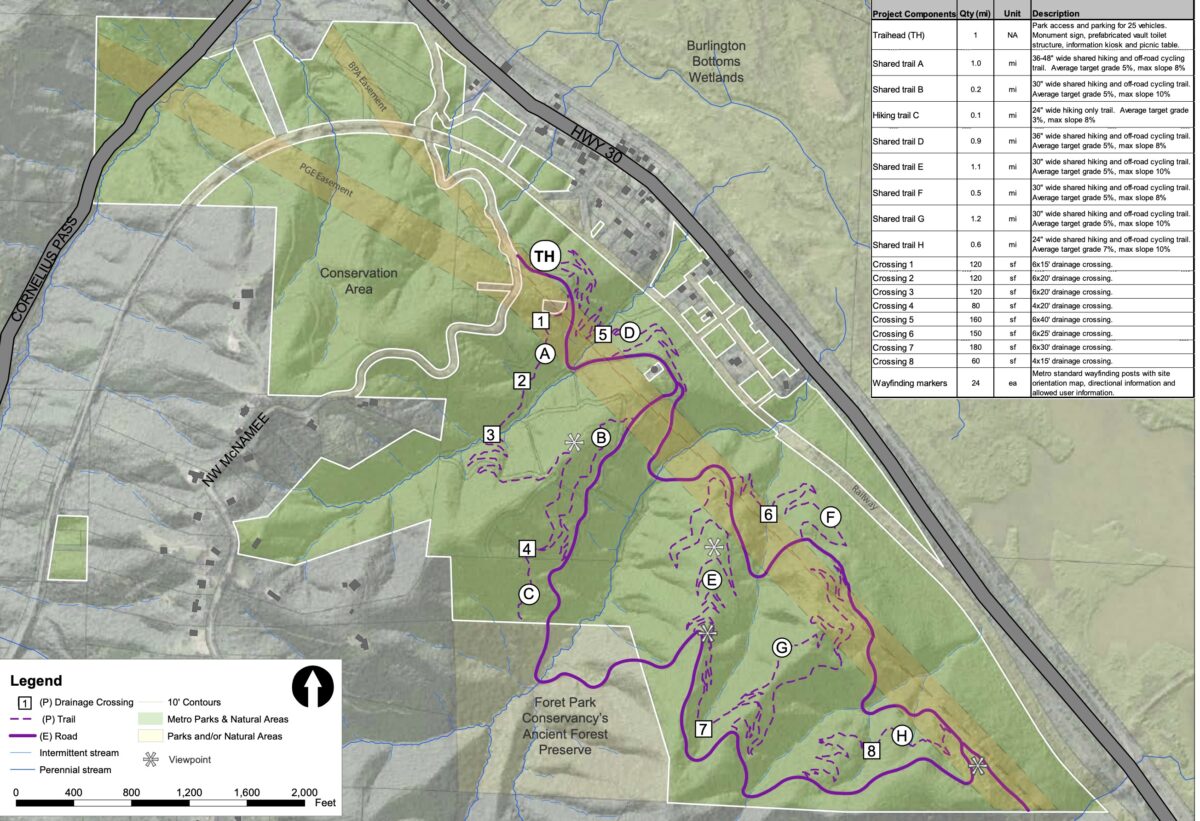
We finally have news to report on Metro’s plan to build new off-road singletrack cycling trails on land just beyond Portland’s northwest border: Multnomah County has set a date for a public hearing on the trail proposal at its planning commission.
The North Tualatin Mountain trails would be located about 14 miles north of Waterfront Park and downtown Portland, and would be accessible via Highway 30 and NW McNamee Road. If you’ve ever taken a bike or a car to Sauvie Island, you’d just stay on the highway for another three miles to reach the new trailhead.
Metro Council adopted the North Tualatin Mountains Master Plan in 2016. That plan included a proposal for a mix of natural area conservation and trails on four separate sites just north of Forest Park totaling 1,300 acres of land. Two of those parcels were deemed fit for off-road cycling trails. The 339-acre Burlington Creek Forest parcel will be the first one to be developed.
The plan calls for 5.6 miles of bicycle trails that would be shared with hikers. The trails would range in width from 24 to 48-inches wide. The Burlington Creek Forest project will also include a restroom, picnic table, informational kiosk, and a trailhead with a parking lot that will fit 25 cars.
Since the project requires several land use permits and would require a change to Multnomah County’s Comprehensive Plan, the planning commission must sign off on the proposal before construction can start. The commission hearing is set for February 6th at 6:30 pm and public testimony is encouraged. Metro submitted the land use and permit applications to the county in fall 2017.
The plans for Burlington have changed slightly since we shared our first look at them in 2015. The parking lot has grown by 10 spaces and the trail descriptions have changed a bit. In 2015 we reported a total of 6.15 miles of trails and gravel roads — including 2.25 miles of what Metro coined “off-road cycling optimized” trails. The new description of trails posted in the public hearing notice describe 5.6 miles of “shared hiking and off-road cycling trails.”
The final design of the trail network at Burlington Creek is yet to come. Once Metro has permits in hand, they’ll finalize the plans and construction will finally start. During the previous public outreach, Metro promised that the bike trails would “meander up and down steep forest topography” and would be “designed to provide a variety of challenge levels and opportunities to create loops.”
When this trail plan came to Metro, there was organized opposition from people who live in the nearby mountains. They held signs against the “Adventure Park Trail Plan” and protested outside a meeting at Metro headquarters on Southeast Grand Avenue. But Metro Council saw past the anti-bike sentiment, realized it was based on protecting private property and not the public good, and voted unanimously to support the trails. Their decision was an exciting step forward for off-road cycling and came in contrast to years of bureaucratic foot-dragging at the City of Portland where leaders have acknowledged the need for more singletrack in places like Forest Park and River View; but have been unable and/or unwilling to make it happen.
There is vast unmet demand for more places to ride within a short distance of Portland. For evidence of this we need only look at the success of Gateway Green and Rocky Point. If they are constructed, the trails at Burlington Creek would be more expansive and interesting than what’s available at Gateway Green and would be much closer than Rocky Point.
Portland-based nonprofit NW Trail Alliance have been instrumental stewards at both those sites. NWTA Board Member Juntu Oberg called the hearing announcement an “important next step.” “We appreciate the amount of work Metro has done to preserve and protect this natural area so close to the City of Portland,” Oberg shared in an email to us this morning. “We look forward to participating in this public process to ensure off-road cycling access on this property.”
When they filed their applications with Multnomah County in 2017, Metro expected to hold this hearing in early 2020 and the new park was supposed to open in 2022. At an open house event in 2015, they said we’d have a grand opening in 2017. Either way, we are too many years behind schedule! Hopefully the hearing goes well and we can make this happen sooner rather than later.
Get your testimony ready for February 6th. Learn more at the county’s notice of public hearing and check Metro’s site for background on the trails plan.
UPDATE, 1/25: From a process standpoint, here’s what we can expect. The following comes from Metro Parks and Nature dept:
Land use hearings with the Multnomah County Planning Commission are expected to take 2 – 3 months. After they make a recommendation, we will need to go before the full County Board of Commissioners for approval. This is likely another 3 – 4 month process.
If the Board approves our applications, a community member or group has an opportunity to appeal to the State Land Use Board of Appeals and then the Oregon Courts of Appeal, if they choose to do so. Appeals could add a year or two to our process before we could potentially proceed.
At that point, funding will need to be identified to complete design engineering as well as construction.


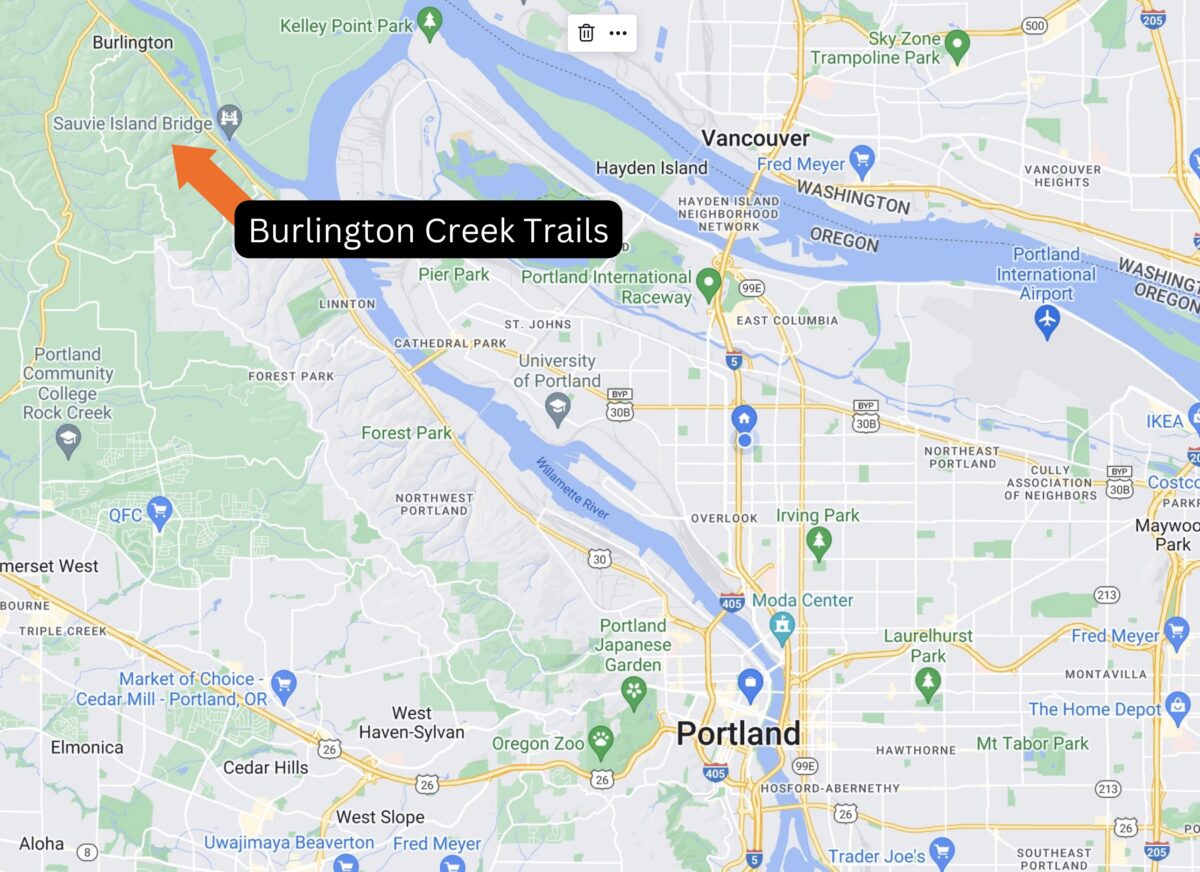
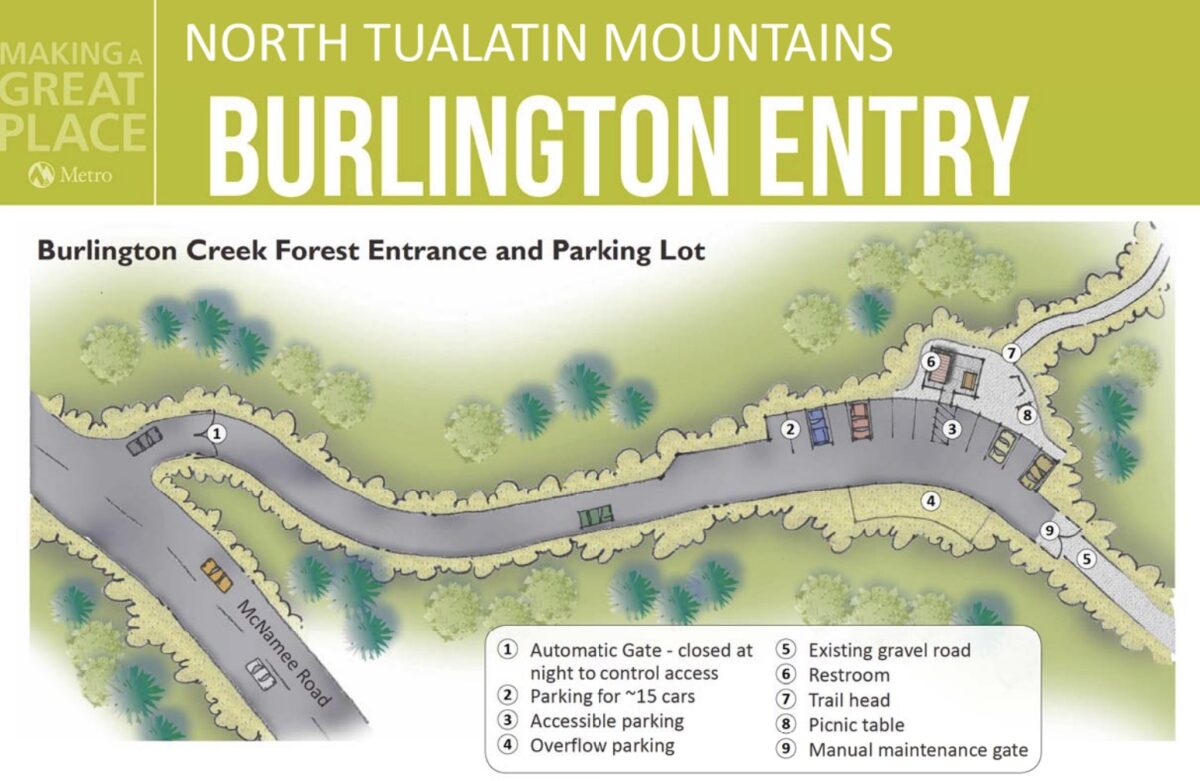
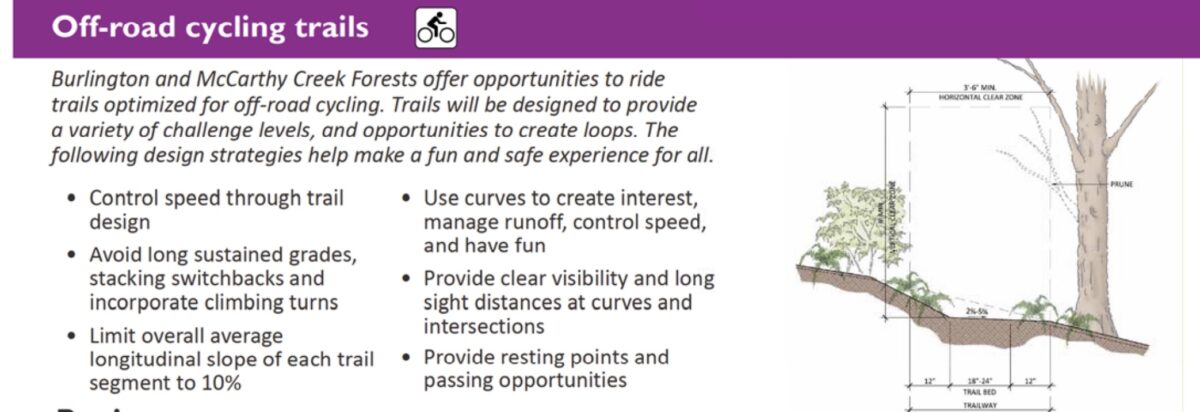


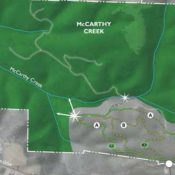
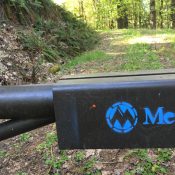

Thanks for reading.
BikePortland has served this community with independent community journalism since 2005. We rely on subscriptions from readers like you to survive. Your financial support is vital in keeping this valuable resource alive and well.
Please subscribe today to strengthen and expand our work.
I will be very surprised if this gets approved and completed. The history of this project leads me to believe even less that anything will get done. The amount of trails was already cut down from the original proposals.
It is amazing the amount of protests from the neighbors out there; they don’t want to give up their quiet streets. I am sure we will see the usual suspects show up.
Can’t wait to hear the false scientific claims or the calls for more studies that need to be done. Won’t someone think of the elk and salmon in this industrialized landscape? Wish they would make some bike only trails to mitigate the often cited, but rarely seen sharing problems.
I know some people love to ride mountain bikes on trails, but this type of cycling is a lot like skiing: 99.99% of people drive their cars to the trails, just as a huge % drive to ski areas. The impact on the climate is huge.
I’m not saying mountain biking is bad – I’m sure it’s great. I just wish that these facilities wouldn’t induce so many carbon and pollutant emissions.
You know what would be great? Mountain biking in Forest Park. I would ride my mountain bike to go ride there. But you know who is stopping it? So called “environmentalists”.
All that being said, the impact of mountain bikers driving to go mountain biking to this location is decreasing the the distance they have to drive. Also, the big polluters are the people who commute to Portland every single day from Scappoose and beyond because they don’t want to live in Portland and pay Portland taxes, but they sure do love they money and economic opportunity.
Your argument seems like a straw man.
No, Alex, it’s not a straw man. One of the big reasons I ride a bike, almost daily, is to avoid the carbon my car emits. We cyclists are doing more than almost anyone else to fight climate change, so it’s plainly just a bit galling to set up a situation where cyclists are contributing to the problem just like everyone else.
Speaking of Forest Park, can’t you already bike on Lief Erickson Drive? But that’s not enough and you want to bike the narrow single-track trails? Clearly someone who get killed if that were allowed. Last time I went for a hike around Hagg Lake, some guy on a mountain bike almost killed me on a blind single-track bend, since cycling *is* allowed on those trails.
First, yes, we should be concerned about carbon emissions and other impacts from vehicle usage when talking about any form of biking, including mountain biking. I agree, in a perfect world, this would be connected to a large group of trails. However, if you REALLY want to eliminate carbon emissions from people traveling to mountain bike, you need to support robust urban mountain biking options using best practices.
Second, the statement “clearly someone [will] get killed if that were allowed” is false. How do we know? Because hundreds of cities with thousands of miles of trails allow urban mountain biking on single track without injuring or killing people. How do they do this? They’re apply multiple best practices on the use of those trails by individuals. While there isn’t the time to go through all of them, the two biggest are the use of true stacked loop trail layouts (often directional) and something called User Management Techniques. In places that have used these best practices, they do not have problems with harms occurring to either hikers or mountain bikers on shared trails. If you would like to see a place with hiker/biker trails in layout somewhat similar to Forest Park and surrounding area, it’s hard to choose something better than Duluth. 103 miles of shared trails without anyone getting killed.
Just because you ride a bike to avoid emitting carbon doesn’t mean that your argument isn’t a straw man argument. A straw man argument is one where the argument is an overstatement of the problem and that’s exactly what I think you did. The number of people going out there is such a small impact in regards to emissions that it is almost laughable that you are talking about it.
I think Lief Erickson is also a straw man argument. You are distorting the reality of what mountain biking is. Leif Erickson Drive is exactly that, a drive, a place you can drive a car. By that logic I mountain biking is anything I can ride on my mountain bike on, including all paved roads. If you are going to be that disingenuous, why bother even engaging?
Lol – sure. You should look up the statistics around driving and deaths. Somehow we still allow that…
You can’t drive a car on Leif Erickson fyi
You can, but it isn’t legal unless you work for the city.
Most bicycle trips in the USA are for leisure or sport so these don’t replace car trips at all. Given that only one out 200 commutes (0.5%) are by bike in the USA, the impact of “cyclists” on transportation-associated GHG emissions is hardly even a rounding error.
Not mine. I replace almost *all* of my car trips with bicycle trips. A significant portion of BP readers and commenters do likewise – and many have gotten rid of their cars and get around by bike exclusively.
I agree we are probably a small group, in percentage terms, but it needs to get bigger if the planet has any chance of survival.
In my experience there are many cyclists who treat cycling like skiing. I wish y’all would use your bikes to replace car trips. It’s just as fun and you feel good doing it.
A lot of us do both. I cut my carbon emissions where I can: cycling around town, road cycling around town for recreation, mountain biking at Gateway Green (no driving needed). Sometimes I drive my mountain bike with friends to ride at the larger trail systems, but I also do that with my road bike. I would love to have more transit-accessible or close by single track riding so I can drive less.
Your “no one should have fun with bikes because of climate change” position isn’t going to appeal to anyone.
“…the impact of mountain bikers driving to go mountain biking to this location is decreasing the the distance they have to drive”.
That’s a key point. Lots of people agree the idea of driving somewhere to bike isn’t great. And maybe these trails will encourage some people to drive to use them who wouldn’t bother driving further to bike on current options. But it will also cut the driving distance for others who currently do drive to the more-remote options.
It’s a bit like what I don’t like about system development charges–the assumption is a new development will generate new driving trips, but if the development is something currently lacking in an area, it can actually reduce driving.
Obviously the ideal solution is to build better in-city options within biking distance for more people. That also will ease the biker/walker conflicts that happen when people aren’t given good local off-road biking options.
It’s going to be a certain type of rider that rides to the trails, rides the trails, and then rides home. We’re talking 20-30 miles of riding when you live anywhere in the city. Most people I know that do that would treat a local urban trail as a training ground for when they drive their car out of the city. These folks typical ride quality full suspension bikes and are fit.
Most are going to drive to ride regardless if it’s in the city. Look at Thurman, why do people drive to run and not ride their bikes to run? When I go up there, I don’t see hundreds of bikes, I see hundreds of cars.
Sorry to be a buzz kill.
That’s not what I meant. I didn’t mean that people will bike to this facility instead of drive to others. Some may, but I agree with you that most will drive.
I meant that some people who are now driving 20 or 40 or more miles out of town to get to trails will instead drive a shorter distance to get to this one. That’s also what I understood Alex–who I was quoting–to be saying.
I don’t ride much any more but a good friend of mine is hardcore. This will be a place that he takes his family.
I can’t imagine that he will ever drive to this place to ride because it’s all about time and workouts.
He’d drive to post canyon and work out for several hours. I think he’d approach this trail system as something that you incorporate into a city ride, probably take out his hardtail, ride there, do loops, then ride back.
To drive there and perform loops would be boring as hell, but I imagine the spandex types will eat it up; hopefully they have an EV charging station.
If you are referring to these specific trails, then honestly, yes, the number of riders that could bike here and back home aren’t large.
But if you are talking about the entire concept of urban mountain biking, things are different. Typically, a city with urban mountain biking has a mix of places, types and sizes. Maybe that is an attempt to have a 1-mile loop in every neighborhood at a base level. These are the “everybody” trails, kids and adults busting out a lap or two before/after work/school. There is typically some kind of “regional” trails, that is specific parks in town that have more trails so people can get in longer rides – 10 miles or more. Some places have “destination” trails, that is trails designed to appeal to locals and bring people in from outside of town. Now, this sort of “perfect” scenario and obviously, not every place has this. But the goal is to get most users to have plenty of options without have to bike 20-30 miles.
Mac forest is a good example of this in Corvallis.
I agree with this. I spent almost six years living in Santa Cruz, and notwithstanding some ill-conceived illegal trails, the mountain bikers there tended to be very good trail stewards. They volunteered a lot of time to both MTB and non-MTB trail maintenance, and took care not to ride muddy trails in the rainy season down there. I’m in favor of allowing mountain biking in Forest Park – but I do think we should build purpose built trails for it. In addition to the general sketchiness that can occur when mountain bikers and hikers share the same narrow trails, purpose built trails can be designed to handle speed and erosion better. The Forest Service has a demonstration forest in Soquel, CA dedicated to developing best practices for building mountain bike trails in steep, forested areas. I think partnering with them to design trails for Forest Park would be a big boon to the recreational possibilities in the city.
I support omitting the parking lot. They should add a trail connection from the Bus Stop on Highway 30.
The trails would get a lot less use, and you’d likely see people parking on the shoulder of HWY 30, probably blocking the bike lane on weekends. Enjoy.
The impact on the climate is huge compared to what? Because I think the thing to compare it to is people driving 50 miles out of town to find other trails. Not to mention, this is within reasonable biking distance of town.
Short of Metro returning the lands to Indigenous groups I’m in full favor of this plan. I’m familiar with this area as a hiker and “industrial landscape” is an understatement. Weyerhaeuser has decimated this landscape of biodiverse ancient hunting grounds and just clearcut another big chunk of it in the last few years (almost to the edge of the beaver pond). I think the map is wrong, though. There is no road through the ancient forest, which is only about 50 acres and one of the most special places left in the Tualatin mountain range. The road runs along the edge and there’s no old growth to my knowledge on the other side of the road. I mention this because I was initially alarmed by the purple line through it. IMHO those 50 acres should be set aside for quiet reflection, being one of the last (if not the last) untouched/primeval areas in the middle of a giant, earth-pillaging agricultural facility that runs all the way to the ocean. The rest of it, including sections of Forest Park: go nuts. Maybe someone from the Forest Park Conservancy could chime in about the accuracy of the map?
Correcting my own post: I got two different parcels of land mixed up. One is Metro land (the subject of this article) that is in bad shape and abuts the ancient forest, but has not been clearcut recently. The other is the area off Rocky Point Rd, which has a beautiful hidden beaver pond and is still being actively clearcut by Weyerhaeuser. Sorry about that. I personally support mountain biking in both areas (especially, in this case, sans parking lot), just not inside the ancient forest itself.
Can that gravel road off McNamee be ridden or hiked now?
If it’s the area that I think it is by the description, it is still a no bike no dog area. (Doesn’t stop some dog owners though).
It’s definitely open for hiking. Kind of boring after the first time, but the loop is great for a trail running/hill workout.
Description
I’m feeling underwhelmed, but hey I guess it’s a start, and/or better than nothing?
Really wish I lived in a city with a big, hilly, forested park next to it where I could ride my MTB on well-designed trails that brought joy (and tourism dollars) to its citizens.
Well, you would have lots of options, they just aren’t really in the PDX area. Even places you don’t think of as having a pretty robust urban MTBing experience have it. If even Lincoln, NE can outclass Portland in regard to actually providing MTB trails in local parks, you know Portland is behind the curve. Some places like Knoxville, TN realize the advantage that locally accessible forests with trails bring. (Side note: that Knoxville link shows off aggregation really well, which would be recommended for an urban trail in Portland for obvious reasons.)